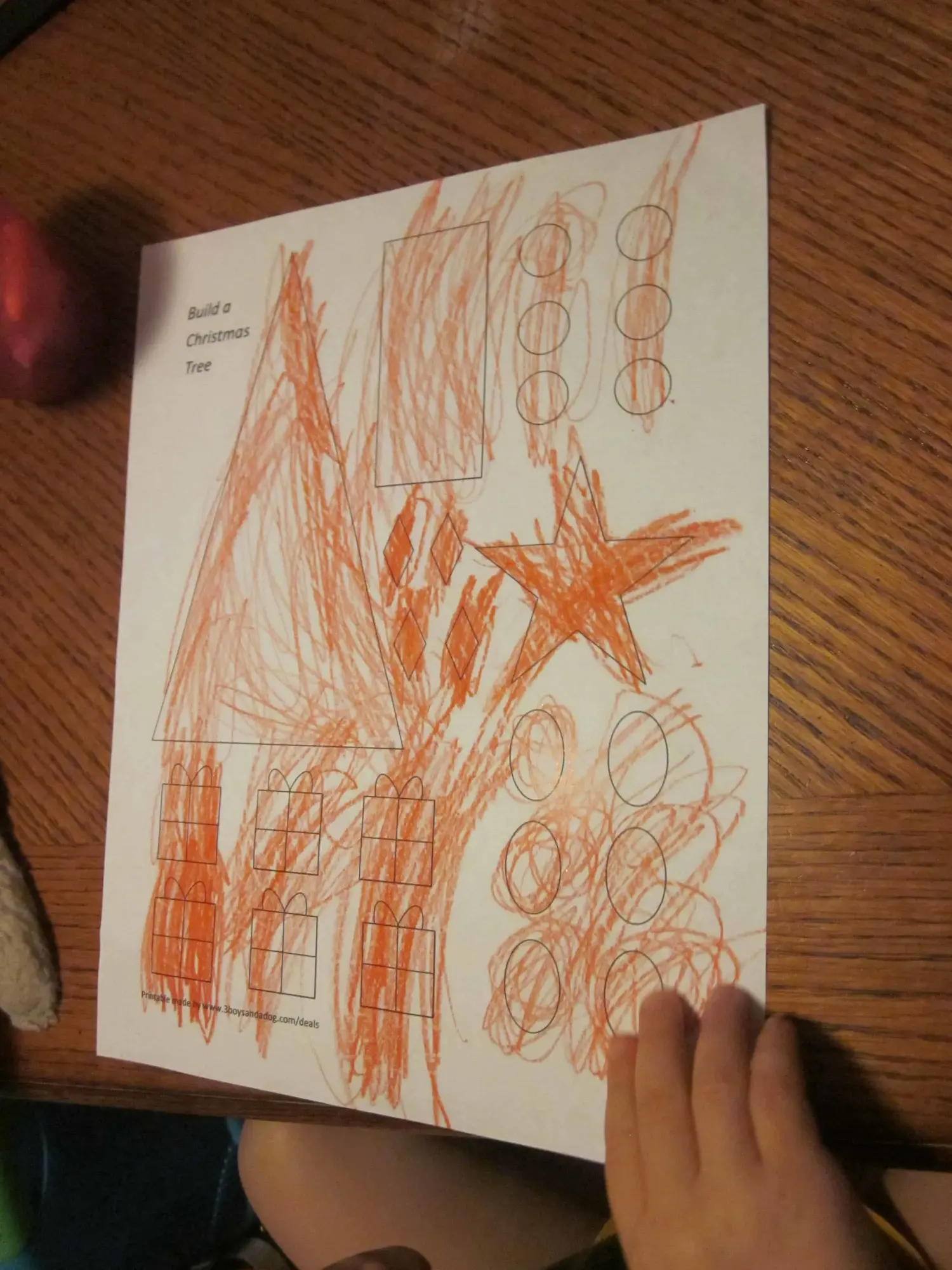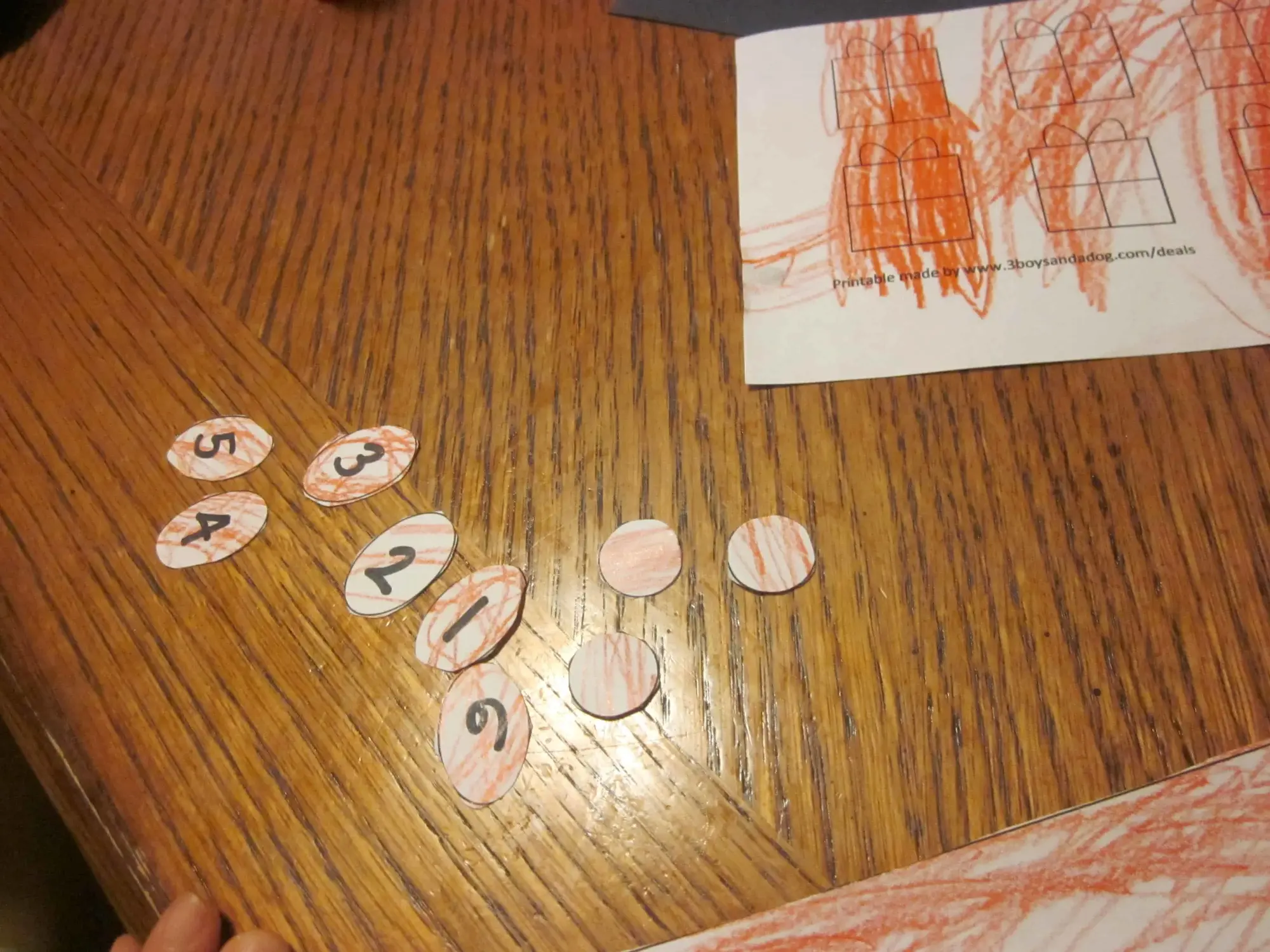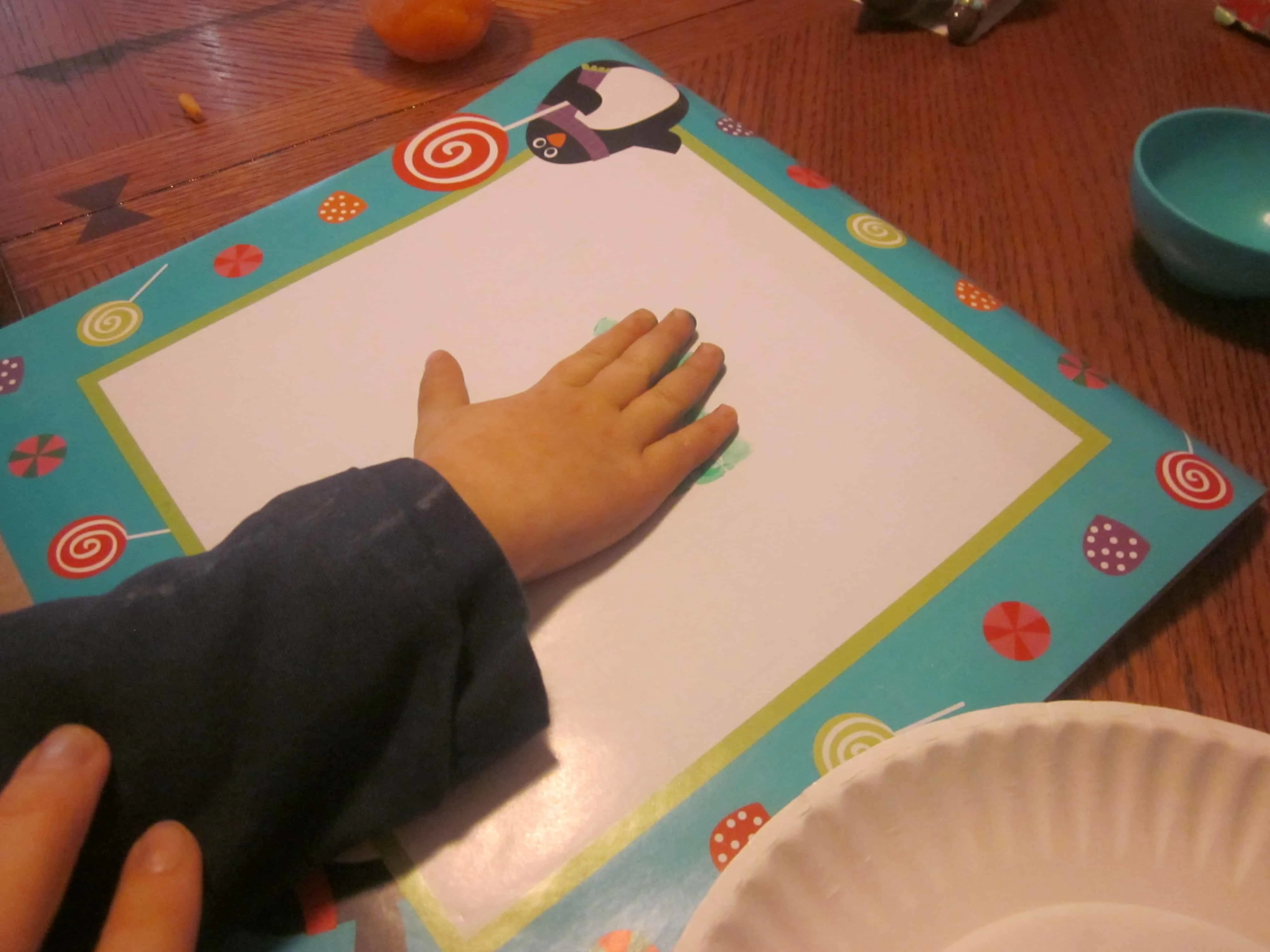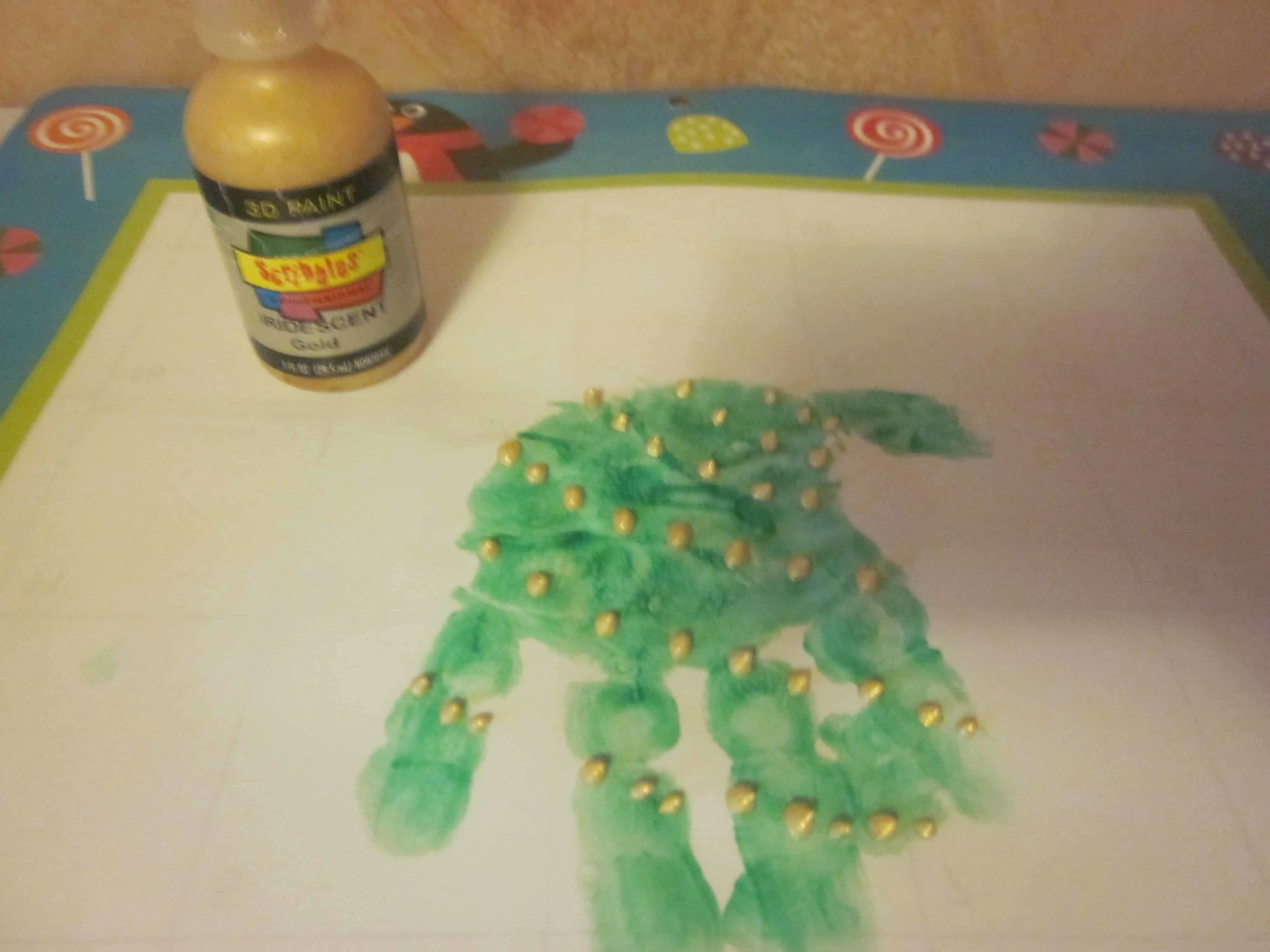Using these Christmas tree shapes is such a fun way to help preschoolers learn shapes, plus it’s an easy peasy and fun kids craft for Christmas–win win!
Especially when we can use them to review our shapes!
Seriously, teaching shapes with Christmas trees is so simple and a natural, hands on learning activity for the holiday season.
Oh, but if you’re just here for the whole Christmas tree thing, check out these 50+ Christmas tree crafts for kids. There’s so many fun ideas for the kiddos!
Today, we’ll be focusing on the Christmas tree.
Makes me want to sing. Oh Christmas Tree! Oh Christmas Tree! How lovely are your branches!
There are two projects here, one with a printable and one that uses your child’s handprint–both awesome Christmas crafts for kids that are hands-on active projects that the kids will love.
If you want to adapt this lesson for an older crowd, you could research the history of the Christmas tree and ornaments. The tiny ornaments on the printable would also be great for scissor and fine-motor practice.
Let’s get started!
Christmas Tree Shapes Early Childhood Craft
This Christmas-themed craft for kids is easy to prepare and is such a fun way for your little ones to learn about shapes, colors, and numbers!
What You Need for this Shape Christmas Tree Craft:
Some of the links below may contain affiliate links.
- Build a Christmas Tree Free Printable (below)
- Crayons or markers
- Scissors
- Glue
- Construction Paper
What You Do for This Fun Christmas Craft:
After printing out the shapes, have your child color in the shapes.
Discuss what the shapes are going to become so they can color appropriately or just leave it as a more free-ending project.
As you can see, my Chipmunk (age 3) decided to go for a monochromatic look.
We have been having a little trouble with our numbers, but it’s okay!
Math is definitely a “learn with repetition” kinda subject. So, we have to think outside the box to always include mathematics in our daily doings.
For example, with this craft, we added numbers to the oval ornaments.
This allows for counting and number recognition without my little babe feeling like she is doing math!
After the coloring was complete, I cut the shapes out and got the glue sticks ready! However, depending on the age of your child, he or she could certainly do their own cutting.
Scissor skills are a great fine motor activity for preschoolers and kindergarteners!
Scissors can help your child to develop:
- Independent movements of each finger
- Separation of the two sides of the hand
- Coordination
- Muscles they haven’t used before
We started with the tree and trunk, asking about the shapes and colors.
This is important to remember. In order to make this cute little craft actually an educational project, you must interact with your child during the project: asking questions, discussing shapes, colors, and numbers, talking about Christmas, etc.
After the tree was in place, I handed Chipmunk one ornament at a time, counting as she glued them in place.
Continue in this pattern till your tree is complete!
Finished!!
Ready for another project??
Handprint Christmas Tree
What You Need:
- Someone’s cute little hand
- Green Paint and paint brush
- Gold Puffy Paint
- Construction Paper
What You Do:
Paint child’s hand green with a paint brush. Position it carefully onto paper and push down firmly.
After the paint dries, draw on a trunk and a star (optional)
Use the gold puffy pain to add lights or ornaments.
Finished!
How to Expand on These Holiday Crafts
If you want to build on these holiday crafts, you can do a few fun things to really punch up the fun:
- Have the kiddos build a tree with popsicle sticks
- Make the pattern blocks for a tree with paper rolls
- Shape a tree with salt dough
Basically, if you want to make these crafts a little more in-depth, it’s as easy as adding a few more supplies!
What is the best way to introduce shapes to kids?
When introducing shapes to kids, it is important to start with the basic shapes and then move on to more complex shapes. The basic shapes are circles, squares, rectangles, and triangles. These four shapes are the foundation for all other shapes.
Once kids have a good understanding of these four shapes, they can begin to learn more complex shapes, such as oval, pentagon, hexagon, octagon, etc. One way to help kids learn these shapes is to provide them with plenty of opportunities to see them in the world around them. For example, you can point out circles in the wheels of a car or the sun in the sky.
You can also ask kids to look for squares in window panes or triangles in stop signs.
By providing kids with ample opportunities to see and identify shapes in the world around them, you will help them develop a strong foundation for future mathematical learning.
What are some common mistakes that parents make when teaching their kids about shapes?
One common mistake that parents make when teaching their kids about shapes is using inconsistent terminology. For example, a parent might refer to a square as a “box” or a “rectangle” interchangeably. This can be confusing for kids, who might start to think that all squares are rectangles.
It’s important for parents to use consistent language when teaching about shapes. Another common mistake is assuming that all kids learn about shapes similarly.
Some kids might be able to understand shapes intuitively, while others might need more concrete examples. For example, some kids might benefit from seeing how many different objects in their environment are squares, while others might need to see a square drawn on paper before they can understand what it is.
The key is to identify how your child learns best and then adapt your teaching methods accordingly. Finally, some parents make the mistake of assuming that once their child knows the names of basic shapes, they can automatically identify them in the real world. However, shape recognition is a complex skill that takes time and practice to develop.
Just as you wouldn’t expect a child to be able to read after only being taught the alphabet, you shouldn’t expect a child to be able to identify shapes immediately after learning their names.
Be patient and encourage your child to keep practicing, and they will eventually get the hang of it.
What should I do if my child seems to be struggling with learning about shapes?
There are several things that parents can do if their child seems to be struggling with learning about shapes. One of the most important things is to provide plenty of opportunities for the child to explore and play with a variety of shapes.
This can be done by using everyday objects such as blocks, balls, and toy cars or by using specially designed shape toys. It is also important to talk with the child about the shapes they are playing with, emphasizing both the similarities and differences between them.
If the child is still having difficulty, there are several excellent books and digital resources that can provide additional support.
More Kids’ Christmas Crafts You’ll Love
If you loved these two easy holiday crafts, you’re definitely going to love checking out more of the fun crafts for Christmas that we’ve shared previously:












